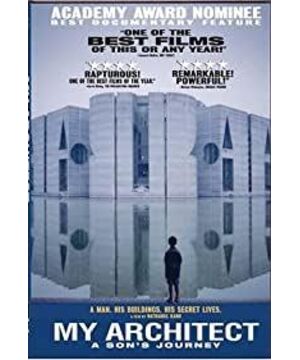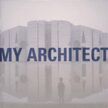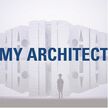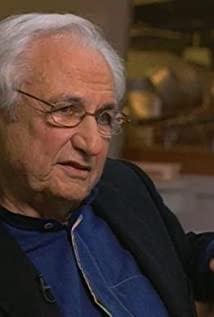The director is Kang's son, an illegitimate child, and his father has never lived with him and his mother. When he was ten years old, his father died in the toilet of a downtown railway station, and his memory of his father died. With the help of the film, he tries to throw away misunderstandings and resentments and find his father. Kang had three women in his life, only one was his wife, who stayed with him for the rest of his life. The other two met Kang when they were in their prime, worked with him, and were determined not to marry. Each woman gave birth to a child for him, and each raised the child basically independently. Two of them had to bear the enormous pressure of single mothers in the conservative society of the 1940s and 1950s, but neither had any regrets. . What kind of charm, what kind of power can make them like this? Three women in one's life is really nothing to an artist. But Kang is not like an artist, he doesn't see whims and rashness in his life, he is more like an ascetic---his life seems to be only architecture, he spends day and night in the studio, ignoring all and women and families. It's hard to imagine what Kang looks like in love, we only see what it's like for those who have loved him -- they have lived their entire lives in this kind of love that's totally giving and getting nothing in return. When the film was filmed, Kang's wife had passed away, and there was only one past video recording an interview in the 1980s. The old lady smiled helplessly and said, "We don't have money...but...he said that money has nothing..." In fact, she was the one who supported the family for many years. Kang's bidding projects kept failing and she was in debt, but she refused to divorce and her husband died. He also took on hundreds of thousands of dollars in debt for him. Both of Kang's lovers were architects with whom he worked, smart and more gritty. The director found a second woman, she was 80 years old, and she still had her charm. Standing in front of the work jointly designed by the two of them, she suppressed her inner excitement: "This is the first work he has found his own style... very Small work, but how beautiful... He pursues perfection..." Suddenly, she stopped, tears flashing: "I was forced to leave him!" Women hid in Italy to give birth to their daughters, as for how to be forced to leave, We don't know anymore. Kang's third woman was the director's own mother. "Don't you regret it, Mom? Don't you resent when you (because of Kang's wife's obstruction) can't even attend the party for the completion of the building you designed?" "No," the woman said with tears in her eyes, "I always believed in us. I'm a soul mate", "Of course I also feel injustice, and I also suffer and complain, but I can't regret it--- When you can be a part of such a project", she pointed to the drawing of the Bangladesh Society (Kang's last work), "When you can participate in the design of such a great work of art, you can't regret it, you feel that everything is is worth it. "---- Overcome the setbacks of life with the life of art---- I understand---- not Kang, but art---- How can pure love come to this?---- But it is Kang, It was Kang who gave them the opportunity to live in art, so they forgot about time and felt like they were part of eternity - how could it be possible to regret outside of time?
Kahn's architecture continues the ancient tradition of resisting time with a heavy solemnity. Just like his people, his buildings do not care about worldly life and only pursue the ultimate spirituality. In Kang's buildings, there are pyramids, Parthenons, and Roman prayer halls. Ancient temples of various ethnic groups are superimposed on the exposed concrete walls. This is a material unique to Kang. Its almost harsh texture is guiding the spirit into the underworld. Think and pray. Although there are many imitations of the exposed cement descendants, they can only have a shape that does not make sense. And Kang's solemnity is unparalleled. Ieoh Ming Pei and Kang's student Mario Botta's masterpieces also have thick walls and simple geometric shapes, and they all follow the tradition of Western classical quality, but they never have the pure to almost harshness of Kang's works. spiritual pursuit. From the Salk Institute to the Bangladesh Society, Kang's buildings are increasingly sinking into the realm of ancient religion, where there is nothing light, and he wants to erect an eternal monument in a floating world. This kind of work is inhumane, if all you want is the warmth of the world; but it is recently humane, if your heart is also full of ultimate concern. And such a person is out of tune with modern society. He does not understand interpersonal relationships, and does not please customers. He has won few projects and has a lot of debts. Finally, one day, he collapsed in the toilet of Penn Station in downtown Manhattan. , never got up again, and the body was unclaimed for days -- he actually crossed out the address on his passport. Nomads in this modern society have three homes, but they may never feel a home in the world.
The director interviewed several famous architects of the same generation as Kang. Philip Johnson and IM Pei, two old foxes, were among the interviewees. The former was full of unsatisfactory compliments, while the latter dramatically described Knowing the difference between himself and Kang --- he is a good businessman and will negotiate with customers. Bei still can't help but be proud of his deeds in defeating Kang and winning the Kennedy Library, but obviously he also knows that the later garbage works are a bit flooded. At the end he said, "Alas, five or six good works are more valuable than dozens of random projects." There are only thirteen works that Kang Yisheng has realized.
I don't like Kang's director's son, he only has American-style simple questions, and he is often abrupt and blunt, neither changing nor putting himself in the person's shoes, often almost like provocation. But Kang's work was there, and I felt speechless when the light and shadow of the sunrise and sunset passed by several times. A Bengali architect may have spoken eloquently, speaking as he stood with the son in that father's last work, the arcs of the great stone arches spanning overhead--"Your father loves all people", he said, "and when a person loves all people, he tends not to see the person closest to him..."
Kang loves all people -- we know this because we see this building, people without the deepest love would not be so devoted, so desperate to seek such a spiritual home made of stone and cement, for those who can see this home, this is an immeasurable love... Maybe this is also It's Kang's own home... I think of what Nietzsche said about the ancient Greeks: "How much pain did they have to go through to be so beautiful!"
View more about My Architect reviews









